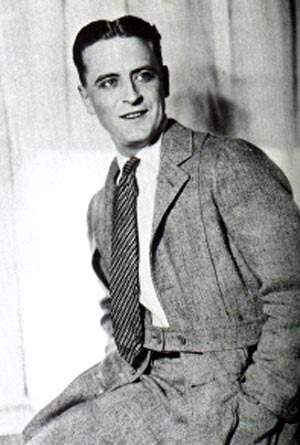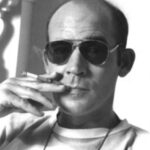The ideal of the “American Dream” has influenced the works and writings of many American authors throughout our countries history. The attitudes and responses towards this dream differ greatly as time progresses, but the messages portrayed by these authors are all built on their American experience. One notable author whose work has been influenced by the ideal of this “American Dream,” is F. Scott Fitzgerald. Fitzgerald used his experiences and ideals regarding this dream to create realistic literary masterpieces, still widely read and appreciated today.
Cousin to the author of the Star Spangled Banner, Fitzgerald grew up in a relatively wealthy upper middle class family. F. Scott Fitzgerald started writing at an early age. He wrote articles and detective stories for his school newspaper, and continued writing even after joining the army at the age of 21. Charles Scribner’s Sons Company declined Fitzgerald’s first novel for publication. Soon afterward, while stationed near Montgomery, Alabama, he fell in love with Zelda Sayre. After Scribners rejected his novel for the second time, Fitzgerald turned to advertising. Unfortunately for him, his meager income was not enough to convince Zelda to marry him. This is similar to the situation of Jay Gatsby in “The Great Gatsby.” Gatsby felt uncomfortable asking Daisy to marry him, and so decided to build up his fortune before proposing. Fitzgerald shared more than just this circumstance with his main character in “The Great Gatsby.” A biography of F. Scott Fitzgerald states, “Like the central character of The Great Gatsby, Fitzgerald had an intensely romantic imagination; he once called it ‘a heightened sensitivity of life.’ The events of Fitzgerald’s own life can be seen as a struggle to realize those promises.”
After Fitzgerald’s third revision of his novel, it was finally accepted by Scribners sons, and became an instant success. Fitzgerald found himself suddenly wealthy and well known. His novel was described as, “A rare glimpse into the morality and immorality of American Youth.” It was only then, similar to his character Jay Gatsby, that he proposed to the woman he loved. They were married in 1920, and had a child a year later. The Fitzgerald’s lifestyle closely paralleled the lifestyle of the upper class in many of Fitzgerald’s novels. Fitzgerald’s second novel, “The beautiful and the damned,” was written a year after he was married. This story reflects the “privileged lives of wealthy, aspiring socialites.” Soon afterward, Fitzgerald published his most well known novel, “The Great Gatsby.” The Fitzgerald’s extravagant lifestyle soon began to reveal drawbacks, the darker side of the American Dream. F. Scott Fitzgerald developed an alcohol addiction, and his wife began to show signs of mental instability. In attempt to escape from their problems and lifestyle, the Fitzgerald’s began traveling the world, “living at various times in several different cities in Italy, France, Switzerland, and eight of the United States.” This attempt at escape was a failure in whole, and did little to relieve the Fitzgerald’s situation.
Zelda Fitzgerald’s mental illness reached a critical level, and she was checked in and out of clinics from 1930 until her death in 1948. Fitzgerald’s fourth novel, “Tender is the night,” was semi autobiographical of his experiences dealing with his wife and her mental illness. He resulted to heavy alcoholism, and allowed his life and talent to quickly slip away. His health deteriorated quickly. It was not until near the end of his life that he began to write his fifth and final novel, a story that was never finished. Fitzgerald died of a heart attack in 1940. He was only forty-four years old.
Fitzgerald belonged to a group of authors who titled themselves the, “Lost Generation.” These authors lived in the post world war one era, and discussed the themes of youth, despair, and age with remarkable emotional honesty. The experiences these authors went through and the society in which they were surrounded by had a deep impact on their work. Fitzgerald himself delved deep into the themes of materialism, corruption, and 1920’s upper class society. The works of the, “Lost Generation,” were often pessimistic, and unconfident in the future of American lifestyle. The characters of F. Scott Fitzgerald resemble bright, inspiring, heroic persons, who seem to blaze with intensity until finally dying out. These characters likely resemble F Scott Fitzgerald’s image of himself, and his expectations regarding the course of his own life.
Today Fitzgerald is remembered, as stated in the article Fitzgerald, F. Scott, as the “Literary spokesman of the ‘Jazz age’.” Although his work did not gain public recognition for its greatness until long after his death, it is now appreciated in its entirety. Although a debilitating alcoholic, Fitzgerald produced literary genius rival to any of the great authors of the decade, following a strenuous routine of constantly editing and rewriting his work until it fit his expectations of perfection. He is recognized as the representative of an era, the descriptor of the American 1920’s. To date, more than 20 films have been created from the writings of F. Scott Fitzgerald. While many of these films turned out to be complete failures, the fact that so many film adaptations have been created is alone a credit to his mind and creative talent.



